一个Entity Framework Core的性能优化案例
概要
本文提供一个EF Core的优化案例,主要介绍一些EF Core常用的优化方法,以及在优化过程中,出现性能反复的时候的解决方法,并澄清一些对优化概念的误解,例如AsNoTracking并不包治百病。
本文使用的是Dotnet 6.0和EF Core 7.0。
代码及实现
背景介绍
本文主要使用一个图书和作者的案例,用于介绍优化过程。
- 一个作者Author有多本自己写的的图书Book
- 一本图书Book有一个发行商Publisher
- 一个作者Author是一个系统用户User
- 一个系统用户User有多个角色Role
本实例中Author表和Book数据量较大,记录数量全部过万条,其它数据表记录大概都是几十或几百条。具体实体类定义请见附录。
查询需求
我们需要查找写书最多的前两名作家,该作家需要年龄在20岁以上,国籍是法国。需要他们的FirstName, LastName, Email,UserName以及在1900年以前他们发行的图书信息,包括书名Name和发行日期Published。
基本优化思路
本人做EF Core的复杂查询优化,并不推荐直接查看生成的SQL代码,我习惯按照如下方式进行:
首先,进行EF的LINQ代码检查(初筛),找到明显的错误。
- 查看代码中是否有基本错误,主要针对全表载入的问题。例如EF需要每一步的LINQ扩展方法的返回值都是IQueryable类型,不能有IEnumerable类型;
- 查看是否有不需要的栏位;
- 根据情况决定是否加AsNoTracking,注意这个东西有时候加了也没用;
其次,找到数据量较大的表,进行代码整理和针对大数据表的优化(精细化调整)
- 在操作大数据表时候,先要进行基本的过滤;
- 投影操作Select应该放到排序操作后面;
- 减少返回值数量,推荐进行分页操作;
本人推荐一旦出现性能反复的时候或者代码整体基本完成的时候,再去查看生成的SQL代码。
初始查询代码
public List<AuthorWeb> GetAuthors() {using var dbContext = new AppDbContext();var authors = dbContext.Authors.Include(x => x.User).ThenInclude(x => x.UserRoles).ThenInclude(x => x.Role).Include(x => x.Books).ThenInclude(x => x.Publisher).ToList().Select(x => new AuthorWeb{UserCreated = x.User.Created,UserEmailConfirmed = x.User.EmailConfirmed,UserFirstName = x.User.FirstName,UserLastActivity = x.User.LastActivity,UserLastName = x.User.LastName,UserEmail = x.User.Email,UserName = x.User.UserName,UserId = x.User.Id,RoleId = x.User.UserRoles.FirstOrDefault(y => y.UserId == x.UserId).RoleId,BooksCount = x.BooksCount,AllBooks = x.Books.Select(y => new BookWeb{Id = y.Id,Name = y.Name,Published = y.Published,ISBN = y.ISBN,PublisherName = y.Publisher.Name}).ToList(),AuthorAge = x.Age,AuthorCountry = x.Country,AuthorNickName = x.NickName,Id = x.Id}).ToList().Where(x => x.AuthorCountry == "France" && x.AuthorAge == 20).ToList();var orderedAuthors = authors.OrderByDescending(x => x.BooksCount).ToList().Take(2).ToList();List<AuthorWeb> finalAuthors = new List<AuthorWeb>();foreach (var author in orderedAuthors){List<BookWeb> books = new List<BookWeb>();var allBooks = author.AllBooks;foreach (var book in allBooks){if (book.Published.Year < 1900){book.PublishedYear = book.Published.Year;books.Add(book);}}author.AllBooks = books;finalAuthors.Add(author);}return finalAuthors;}
Benchmark测试后,系统资源使用情况如下:

代码性能非常差,内存消耗很大,一次执行就要消耗190MB,执行时间超过2s。如果是放到WebAPI里面调用,用户会有明显的卡顿感觉;如果面临高并发的情况,很可得会造成服务器资源紧张,返回各种500错误。
优化代码
初筛
按照我们的优化思路,在查看上面的代码后,发现一个严重的问题。
虽然每次LINQ查询返回都是IQueryable类型,但是源码中有多个ToList(),尤其是第一个,它的意思是将Author, Book,User,Role,Publisher等多个数据表的数据全部载入,前面已经说了,Author, Book两张表的数据量很大,必然影响性能。
我们需要删除前面多余的ToList(),只保留最后的即可。请参考附录中的方法GetAuthors_RemoveToList()。
在GetAuthors_RemoveToList()基础上,对照用户的需求,发现查询结果中包含了Role相关的信息和很多Id信息,但是查询结果并不需要这些,因此必须删掉。请参考附录中的方法GetAuthorsOptimized_RemoveColumn()
在GetAuthorsOptimized_RemoveColumn的基础上,我们再加入AsNoTracking方法。请参考附录中的方法GetAuthorsOptimized_AsNoTracking()
我们在Benchmark中,测试上面提到的三个方法,直接结果如下:

从Benchmark的测试结果上看,删除多余ToList方法和删除多余的栏位,确实带来了性能的大幅提升。
但是增加AsNoTracking,性能提反而下降了一点。这也说明了AsNoTracking并不是适用所有场景。Select投影操作生成的AuthorWeb对像,并不是EF管理的,与DbContext无关,它只是作为前端API的返回值。相当于EF做了没有用的事,所以性能略有下降。
代码进一步调整
初筛阶段完成后,下面对代码进一步整理
下面Take和Order操作可以并入基本的查询中,Take可以帮助我们减少返回值的数量。请见 GetAuthorsOptimized_ChangeOrder()方法。
var orderedAuthors = authors.OrderByDescending(x => x.BooksCount).ToList().Take(2).ToList();
在GetAuthorsOptimized_ChangeOrder基础上,对于dbContext.Authors,Author是一张数据量很大的表,我们需要在其进行联表操作前,先过滤掉不需要的内容,所以我们可以把Where前提,还有就是将排序操作放到投影的Select前面完成。请见 GetAuthorsOptimized_ChangeOrder方法。
上面的两个优化方法的执行结果如下:

可以看到性略能有提升。
下面我们为了进一步提升性能,可以查看一下生成的SQL代码,看看是否还有优化的空间。
GetAuthorsOptimized_ChangeOrder方法生成的SQL如下:
SELECT [u].[FirstName], [u].[LastName], [u].[Email], [u].[UserName], [t].[
BooksCount], [t].[Id], [u].[Id], [b].[Name], [b].[Published], [b].[Id], [t].[Age
], [t].[Country]FROM (SELECT TOP(@__p_0) [a].[Id], [a].[Age], [a].[BooksCount], [a].[Country
], [a].[UserId]FROM [Authors] AS [a]WHERE [a].[Country] = N'France' AND [a].[Age] >= 20ORDER BY [a].[BooksCount] DESC) AS [t]INNER JOIN [Users] AS [u] ON [t].[UserId] = [u].[Id]LEFT JOIN [Books] AS [b] ON [t].[Id] = [b].[AuthorId]ORDER BY [t].[BooksCount] DESC, [t].[Id], [u].[Id]
从生成SQL来看,Author表在使用之前过滤掉了相关的内容,但是直接Left Join了[Books]这个大表。我们可以按照前面提到的1900年以前的查询要求,在左联之前先过滤一下,请参考 GetAuthorsOptimized_SelectFilter方法。
该方法执行后,生成的SQL如下:
SELECT [u].[FirstName], [u].[LastName], [u].[Email], [u].[UserName], [t].[
BooksCount], [t].[Id], [u].[Id], [t0].[Name], [t0].[Published], [t0].[Id], [t].[
Age], [t].[Country]FROM (SELECT TOP(@__p_1) [a].[Id], [a].[Age], [a].[BooksCount], [a].[Country
], [a].[UserId]FROM [Authors] AS [a]WHERE [a].[Country] = N'France' AND [a].[Age] >= 20ORDER BY [a].[BooksCount] DESC) AS [t]INNER JOIN [Users] AS [u] ON [t].[UserId] = [u].[Id]LEFT JOIN (SELECT [b].[Name], [b].[Published], [b].[Id], [b].[AuthorId]FROM [Books] AS [b]WHERE [b].[Published] < @__date_0) AS [t0] ON [t].[Id] = [t0].[AuthorId]ORDER BY [t].[BooksCount] DESC, [t].[Id], [u].[Id]
在左联之前,确实进行了过滤,该方法的性能测试如下:

在避免Book表直接进行左联后,性能有所提升。
最后一个优化点,是在EF Core 5.0里面提供了带Filter功能的Include方法,也可以用于本案例的优化,但是该特性但是存在一些局限性,具体请参考EF Core中带过滤器参数的Include方法
但是此方法又涉及了将IQueryable转换成IEnumerable的操作,最后要将生成的Author对象全部转换成AuthorWeb对象。代码过于繁琐,而且带来的性能提升也不明显。因此放弃这个点。
dbContext.Authors.AsNoTracking().Include(x => x.Books.Where(b => b.Published < date))......
结论
从这个优化过程来看,其实对性能提升最大的贡献就是删除多余的ToList(),避免全表载入和删除不需要的栏位两项。其它所谓更精细的优化,性能提升有限。
附录
实体类定义
public class Author{public int Id { get; set; }public int Age { get; set; }public string Country { get; set; }public int BooksCount { get; set; }public string NickName { get; set; }[ForeignKey("UserId")]public User User { get; set; }public int UserId { get; set; }public virtual List<Book> Books { get; set; } = new List<Book>();}public class Book{public int Id { get; set; }public string Name { get; set; }[ForeignKey("AuthorId")]public Author Author { get; set; }public int AuthorId { get; set; }public DateTime Published { get; set; }public string ISBN { get; set; }[ForeignKey("PublisherId")]public Publisher Publisher { get; set; }public int PublisherId { get; set; }}
public class Publisher{public int Id { get; set; }public string Name { get; set; }public DateTime Established { get; set; }}public class User{public int Id { get; set; }public string FirstName { get; set; }public string LastName { get; set; }public string UserName { get; set; }public string Email { get; set; }public virtual List<UserRole> UserRoles { get; set; } = new List<UserRole>();public DateTime Created { get; set; }public bool EmailConfirmed { get; set; }public DateTime LastActivity { get; set; }}public class Role{public int Id { get; set; }public virtual List<UserRole> UserRoles { get; set; } = new List<UserRole>();public string Name { get; set; }}public class AuthorWeb{public DateTime UserCreated { get; set; }public bool UserEmailConfirmed { get; set; }public string UserFirstName { get; set; }public DateTime UserLastActivity { get; set; }public string UserLastName { get; set; }public string UserEmail { get; set; }public string UserName { get; set; }public int UserId { get; set; }public int AuthorId { get; set; }public int Id { get; set; }public int RoleId { get; set; }public int BooksCount { get; set; }public List<BookWeb> AllBooks { get; set; }public int AuthorAge { get; set; }public string AuthorCountry { get; set; }public string AuthorNickName { get; set; }}public class BookWeb{public int Id { get; set; }public string Name { get; set; }public DateTime Published { get; set; }public int PublishedYear { get; set; }public string PublisherName { get; set; }public string ISBN { get; set; }}
优化方法
[Benchmark]
public List<AuthorWeb> GetAuthors() {using var dbContext = new AppDbContext();var authors = dbContext.Authors.Include(x => x.User).ThenInclude(x => x.UserRoles).ThenInclude(x => x.Role).Include(x => x.Books).ThenInclude(x => x.Publisher).ToList().Select(x => new AuthorWeb{UserCreated = x.User.Created,UserEmailConfirmed = x.User.EmailConfirmed,UserFirstName = x.User.FirstName,UserLastActivity = x.User.LastActivity,UserLastName = x.User.LastName,UserEmail = x.User.Email,UserName = x.User.UserName,UserId = x.User.Id,RoleId = x.User.UserRoles.FirstOrDefault(y => y.UserId == x.UserId).RoleId,BooksCount = x.BooksCount,AllBooks = x.Books.Select(y => new BookWeb{Id = y.Id,Name = y.Name,Published = y.Published,ISBN = y.ISBN,PublisherName = y.Publisher.Name}).ToList(),AuthorAge = x.Age,AuthorCountry = x.Country,AuthorNickName = x.NickName,Id = x.Id}).ToList().Where(x => x.AuthorCountry == "France" && x.AuthorAge >= 20).ToList();var orderedAuthors = authors.OrderByDescending(x => x.BooksCount).ToList().Take(2).ToList();List<AuthorWeb> finalAuthors = new List<AuthorWeb>();foreach (var author in orderedAuthors){List<BookWeb> books = new List<BookWeb>();var allBooks = author.AllBooks;foreach (var book in allBooks){if (book.Published.Year < 1900){book.PublishedYear = book.Published.Year;books.Add(book);}}author.AllBooks = books;finalAuthors.Add(author);}return finalAuthors;}[Benchmark]public List<AuthorWeb> GetAuthors_RemoveToList(){using var dbContext = new AppDbContext();var authors = dbContext.Authors.Include(x => x.User).ThenInclude(x => x.UserRoles).ThenInclude(x => x.Role).Include(x => x.Books).ThenInclude(x => x.Publisher)// .ToList().Select(x => new AuthorWeb{UserCreated = x.User.Created,UserEmailConfirmed = x.User.EmailConfirmed,UserFirstName = x.User.FirstName,UserLastActivity = x.User.LastActivity,UserLastName = x.User.LastName,UserEmail = x.User.Email,UserName = x.User.UserName,UserId = x.User.Id,RoleId = x.User.UserRoles.FirstOrDefault(y => y.UserId == x.UserId).RoleId,BooksCount = x.BooksCount,AllBooks = x.Books.Select(y => new BookWeb{Id = y.Id,Name = y.Name,Published = y.Published,ISBN = y.ISBN,PublisherName = y.Publisher.Name}).ToList(),AuthorAge = x.Age,AuthorCountry = x.Country,AuthorNickName = x.NickName,Id = x.Id})// .ToList().Where(x => x.AuthorCountry == "France" && x.AuthorAge >=20).ToList();var orderedAuthors = authors.OrderByDescending(x => x.BooksCount).ToList().Take(2).ToList();List<AuthorWeb> finalAuthors = new List<AuthorWeb>();foreach (var author in orderedAuthors){List<BookWeb> books = new List<BookWeb>();var allBooks = author.AllBooks;foreach (var book in allBooks){if (book.Published.Year < 1900){book.PublishedYear = book.Published.Year;books.Add(book);}}author.AllBooks = books;finalAuthors.Add(author);}return finalAuthors;}[Benchmark]public List<AuthorWeb> GetAuthorsOptimized_RemoveColumn(){using var dbContext = new AppDbContext();var authors = dbContext.Authors// .Include(x => x.User)//.ThenInclude(x => x.UserRoles)// .ThenInclude(x => x.Role)// .Include(x => x.Books)// .ThenInclude(x => x.Publisher).Select(x => new AuthorWeb{// UserCreated = x.User.Created,// UserEmailConfirmed = x.User.EmailConfirmed,UserFirstName = x.User.FirstName,// UserLastActivity = x.User.LastActivity,UserLastName = x.User.LastName,UserEmail = x.User.Email,UserName = x.User.UserName,// UserId = x.User.Id,// RoleId = x.User.UserRoles.FirstOrDefault(y => y.UserId == x.UserId).RoleId,BooksCount = x.BooksCount,AllBooks = x.Books.Select(y => new BookWeb{// Id = y.Id,Name = y.Name,Published = y.Published,// ISBN = y.ISBN,// PublisherName = y.Publisher.Name}).ToList(),AuthorAge = x.Age,AuthorCountry = x.Country,AuthorNickName = x.NickName,// Id = x.Id}).Where(x => x.AuthorCountry == "France" && x.AuthorAge >=20).ToList();var orderedAuthors = authors.OrderByDescending(x => x.BooksCount).ToList().Take(2).ToList();List<AuthorWeb> finalAuthors = new List<AuthorWeb>();foreach (var author in orderedAuthors){List<BookWeb> books = new List<BookWeb>();var allBooks = author.AllBooks;foreach (var book in allBooks){if (book.Published.Year < 1900){book.PublishedYear = book.Published.Year;books.Add(book);}}author.AllBooks = books;finalAuthors.Add(author);}return finalAuthors;}[Benchmark]public List<AuthorWeb> GetAuthorsOptimized_AsNoTracking(){using var dbContext = new AppDbContext();var authors = dbContext.Authors.AsNoTracking()// .Include(x => x.User)// .ThenInclude(x => x.UserRoles)// .ThenInclude(x => x.Role)// .Include(x => x.Books)// .ThenInclude(x => x.Publisher).Select(x => new AuthorWeb{//UserCreated = x.User.Created,// UserEmailConfirmed = x.User.EmailConfirmed,UserFirstName = x.User.FirstName,// UserLastActivity = x.User.LastActivity,UserLastName = x.User.LastName,UserEmail = x.User.Email,UserName = x.User.UserName,// UserId = x.User.Id,//RoleId = x.User.UserRoles.FirstOrDefault(y => y.UserId == x.UserId).RoleId,BooksCount = x.BooksCount,AllBooks = x.Books.Select(y => new BookWeb{// Id = y.Id,Name = y.Name,Published = y.Published,//ISBN = y.ISBN,//PublisherName = y.Publisher.Name}).ToList(),AuthorAge = x.Age,AuthorCountry = x.Country,//AuthorNickName = x.NickName,Id = x.Id}).Where(x => x.AuthorCountry == "France" && x.AuthorAge >=20).ToList();var orderedAuthors = authors.OrderByDescending(x => x.BooksCount).ToList().ToList();List<AuthorWeb> finalAuthors = new List<AuthorWeb>();foreach (var author in authors){List<BookWeb> books = new List<BookWeb>();var allBooks = author.AllBooks;foreach (var book in allBooks){if (book.Published.Year < 1900){book.PublishedYear = book.Published.Year;books.Add(book);}}author.AllBooks = books;finalAuthors.Add(author);}return finalAuthors;}[Benchmark]public List<AuthorWeb> GetAuthorsOptimized_Take_Order(){using var dbContext = new AppDbContext();var authors = dbContext.Authors.AsNoTracking().Select(x => new AuthorWeb{UserFirstName = x.User.FirstName,UserLastName = x.User.LastName,UserEmail = x.User.Email,UserName = x.User.UserName,BooksCount = x.BooksCount,AllBooks = x.Books.Select(y => new BookWeb{Name = y.Name,Published = y.Published,}).ToList(),AuthorAge = x.Age,AuthorCountry = x.Country,AuthorNickName = x.NickName,}).Where(x => x.AuthorCountry == "France" && x.AuthorAge >=20).OrderByDescending(x => x.BooksCount).Take(2).ToList();// var orderedAuthors = authors.OrderByDescending(x => x.BooksCount).ToList().ToList();List<AuthorWeb> finalAuthors = new List<AuthorWeb>();foreach (var author in authors){List<BookWeb> books = new List<BookWeb>();var allBooks = author.AllBooks;foreach (var book in allBooks){if (book.Published.Year < 1900){book.PublishedYear = book.Published.Year;books.Add(book);}}author.AllBooks = books;finalAuthors.Add(author);}return finalAuthors;}[Benchmark]public List<AuthorWeb> GetAuthorsOptimized_ChangeOrder(){using var dbContext = new AppDbContext();var authors = dbContext.Authors.AsNoTracking().Where(x => x.Country == "France" && x.Age >=20).OrderByDescending(x => x.BooksCount)// .Include(x => x.User)// .ThenInclude(x => x.UserRoles)// .ThenInclude(x => x.Role)// .Include(x => x.Books)// .ThenInclude(x => x.Publisher).Select(x => new AuthorWeb{//UserCreated = x.User.Created,// UserEmailConfirmed = x.User.EmailConfirmed,UserFirstName = x.User.FirstName,// UserLastActivity = x.User.LastActivity,UserLastName = x.User.LastName,UserEmail = x.User.Email,UserName = x.User.UserName,// UserId = x.User.Id,//RoleId = x.User.UserRoles.FirstOrDefault(y => y.UserId == x.UserId).RoleId,BooksCount = x.BooksCount,AllBooks = x.Books.Select(y => new BookWeb{// Id = y.Id,Name = y.Name,Published = y.Published,//ISBN = y.ISBN,//PublisherName = y.Publisher.Name}).ToList(),AuthorAge = x.Age,AuthorCountry = x.Country,//AuthorNickName = x.NickName,Id = x.Id}) .Take(2).ToList();// var orderedAuthors = authors.OrderByDescending(x => x.BooksCount).ToList().ToList();List<AuthorWeb> finalAuthors = new List<AuthorWeb>();foreach (var author in authors){List<BookWeb> books = new List<BookWeb>();var allBooks = author.AllBooks;foreach (var book in allBooks){if (book.Published.Year < 1900){book.PublishedYear = book.Published.Year;books.Add(book);}}author.AllBooks = books;finalAuthors.Add(author);}return finalAuthors;}// [Benchmark]public List<AuthorWeb> GetAuthorsOptimized_IncludeFilter(){using var dbContext = new AppDbContext();var date = new DateTime(1900, 1, 1);var authors = dbContext.Authors.AsNoTracking().Include(x => x.Books.Where(b => b.Published < date)).Include(x => x.User)// .IncludeFilter(x =>x.Books.Where(b =>b.Published.Year < 1900)).Where(x => x.Country == "France" && x.Age >=20).OrderByDescending(x => x.BooksCount)// .ThenInclude(x => x.UserRoles)// .ThenInclude(x => x.Role)// .Include(x => x.Books)// .ThenInclude(x => x.Publisher).Take(2).ToList();// var orderedAuthors = authors.OrderByDescending(x => x.BooksCount).ToList().ToList();var authorList = authors.AsEnumerable().Select(x => new AuthorWeb{//UserCreated = x.User.Created,// UserEmailConfirmed = x.User.EmailConfirmed,UserFirstName = x.User.FirstName,// UserLastActivity = x.User.LastActivity,UserLastName = x.User.LastName,UserEmail = x.User.Email,UserName = x.User.UserName,// UserId = x.User.Id,//RoleId = x.User.UserRoles.FirstOrDefault(y => y.UserId == x.UserId).RoleId,BooksCount = x.BooksCount,AllBooks = x.Books// .Where(b => b.Published < date).Select(y => new BookWeb{// Id = y.Id,Name = y.Name,Published = y.Published,//ISBN = y.ISBN,//PublisherName = y.Publisher.Name}).ToList(),AuthorAge = x.Age,AuthorCountry = x.Country,//AuthorNickName = x.NickName,// Id = x.Id}).ToList();return authorList;}[Benchmark]public List<AuthorWeb> GetAuthorsOptimized_SelectFilter(){using var dbContext = new AppDbContext();var date = new DateTime(1900, 1, 1);var authors = dbContext.Authors.AsNoTracking().Include(x => x.Books.Where(b => b.Published < date)).Where(x => x.Country == "France" && x.Age >=20).OrderByDescending(x => x.BooksCount).Select(x => new AuthorWeb{//UserCreated = x.User.Created,// UserEmailConfirmed = x.User.EmailConfirmed,UserFirstName = x.User.FirstName,// UserLastActivity = x.User.LastActivity,UserLastName = x.User.LastName,UserEmail = x.User.Email,UserName = x.User.UserName,// UserId = x.User.Id,//RoleId = x.User.UserRoles.FirstOrDefault(y => y.UserId == x.UserId).RoleId,BooksCount = x.BooksCount,AllBooks = x.Books.Where(b => b.Published < date).Select(y => new BookWeb{// Id = y.Id,Name = y.Name,Published = y.Published,//ISBN = y.ISBN,//PublisherName = y.Publisher.Name}).ToList(),AuthorAge = x.Age,AuthorCountry = x.Country,//AuthorNickName = x.NickName,// Id = x.Id}).Take(2).ToList();return authors;}
相关文章:

一个Entity Framework Core的性能优化案例
概要 本文提供一个EF Core的优化案例,主要介绍一些EF Core常用的优化方法,以及在优化过程中,出现性能反复的时候的解决方法,并澄清一些对优化概念的误解,例如AsNoTracking并不包治百病。 本文使用的是Dotnet 6.0和EF…...

【Python 千题 —— 基础篇】列表排序
题目描述 题目描述 给定一个包含无序数字的列表,请将列表中的数字按从小到大的顺序排列,并输出排序后的列表。 输入描述 输入一个包含无序数字的列表。 输出描述 程序将对列表中的数字进行排序,并输出排序后的列表。 示例 示例 ① 1…...

leetcode26:删除有序数组中的重复项
leetcode26:删除有序数组中的重复项 方案一:依次遍历,如果不符合条件则冒泡交换到最后一个位置。o(n^2),结果超时 #include <algorithm> #include <iostream>using namespace std; class Solution { public:int removeDuplicat…...
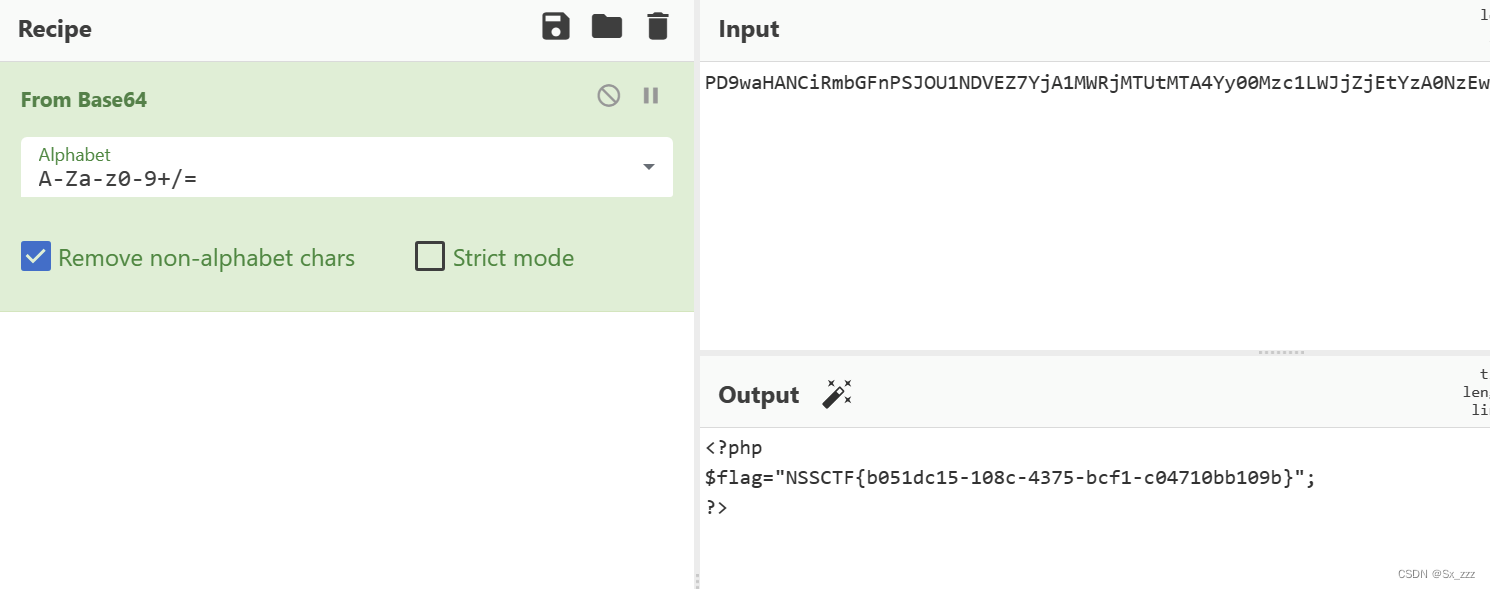
[FSCTF 2023] web题解
文章目录 源码!启动!webshell是啥捏细狗2.0ez_php1Hello,youEZ_eval巴巴托斯! 源码!启动! 打开题目,发现右键被禁了 直接ctrlu查看源码得到flag webshell是啥捏 源码 <?php highlight_file(__FILE__); $😀&qu…...

linux查看内存的方式
1、显示内存状态:free -h 以合适的单位显示内存使用情况,最大为三位数,自动计算对应的单位值。单位有: B bytes K kilos M megas G gigas T teras $free -htotal used free shared buff/cache available Me…...

Python 编写 Flink 应用程序经验记录(Flink1.17.1)
目录 官方API文档 提交作业到集群运行 官方示例 环境 编写一个 Flink Python Table API 程序 执行一个 Flink Python Table API 程序 实例处理Kafka后入库到Mysql 下载依赖 flink-kafka jar 读取kafka数据 写入mysql数据 flink-mysql jar 官方API文档 https://nigh…...
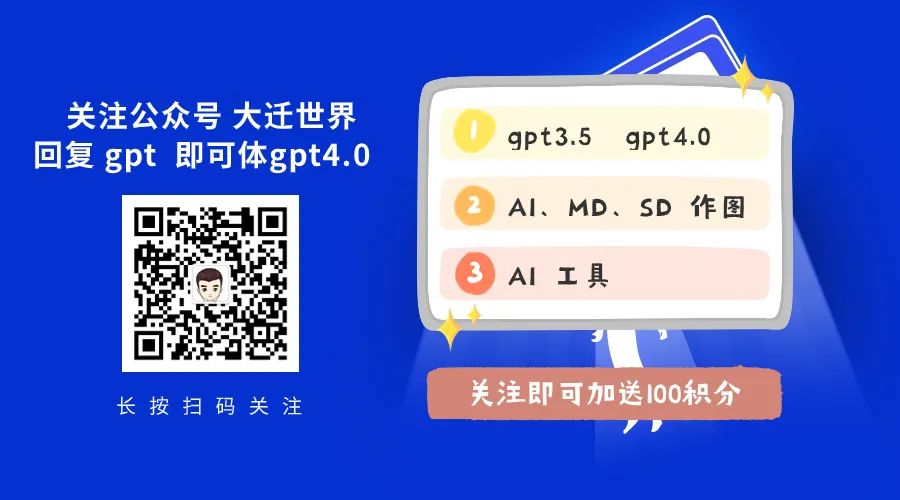
如何 通过使用优先级提示,来控制所有网页资源加载顺序
当你打开浏览器的网络标签时,你会看到大量的活动。资源正在下载,信息正在提交,事件正在记录,等等。 由于有太多的活动,有效地管理这些流量的优先级变得至关重要。带宽争用是真实存在的,当所有请求同时触发时…...

10月25日,每日信息差
今天是2023年10月26日,以下是为您准备的14条信息差 第一、百世集团牵头成立全国智慧物流与供应链行业产教融合共同体在杭州正式成立,该共同体由百世集团、浙江工商大学、浙江经济职业技术学院共同牵头 第二、问界M9预定量突破15000台 第三、前三季度我…...

泛微OA之获取每月固定日期
文章目录 1.需求及效果1.1需求1.2效果 2. 思路3. 实现 1.需求及效果 1.1需求 需要获取每个月的7号作为需发布日期,需要自动填充1.2效果 自动获取每个月的七号2. 思路 1.功能并不复杂,可以用泛微前端自带的插入代码块的功能来实现。 2.将这需要赋值的…...
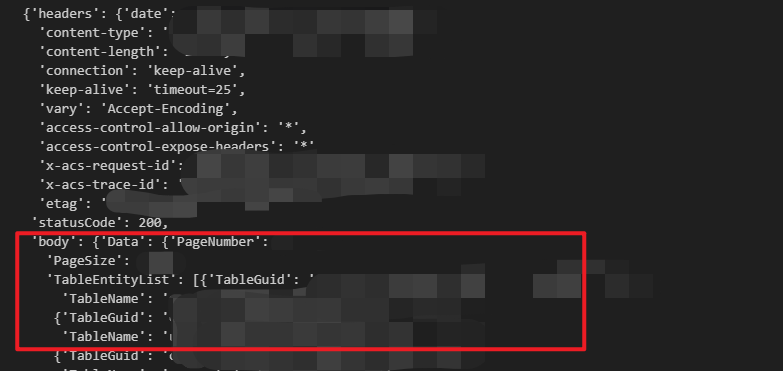
Dataworks API:调取 MC 项目下所有表单
文章目录 前言Dataworks API 文档解读GetMetaDBTableList 接口文档 API 调试在线调试本地调试运行环境账密问题请求数据进一步处理 小结 前言 最近,我需要对公司的数据资产进行梳理,这其中便包括了Dataworks各个项目下的表单。这些表单,作为…...
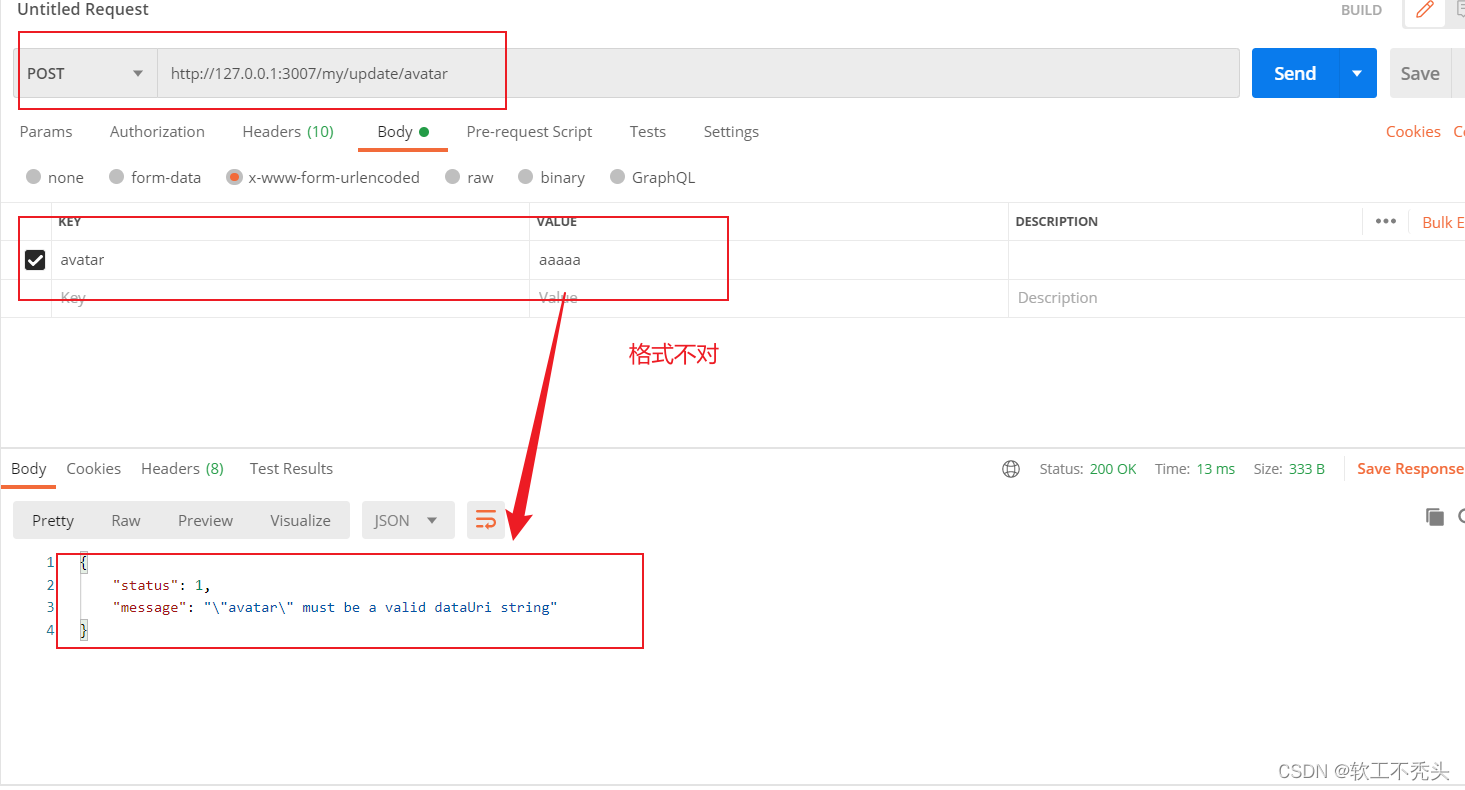
Node编写更新用户头像接口
目录 定义路由和处理函数 验证表单数据 编辑 实现更新用户头像的功能 定义路由和处理函数 向外共享定义的更新用户头像处理函数 // 更新用户头像的处理函数 exports.updateAvatar (req, res) > {res.send(更新成功) } 定义更新用户头像路由 // 更新用户头像的路由…...

MySQL3:MySQL中一条更新SQL是如何执行的?
MySQL3:MySQL中一条更新SQL是如何执行的? MySQL中一条更新SQL是如何执行的?1.Buffer Pool缓冲池2.Redo logredo log作用Redo log文件位置redo log为什么是2个? 3.Undo log4.更新过程5.InnoDB官网架构InnoDB架构-内存结构①Buffer …...

p5.js map映射
本文简介 带尬猴,我嗨德育处主任 p5.js 为开发者提供了很多有用的方法,这些方法实现起来可能不难,但却非常实用,能大大减少我们的开发时间。 本文将通过举例说明的方式来讲解 映射 map() 方法。 什么是映射 从 p5.js 文档 中可…...
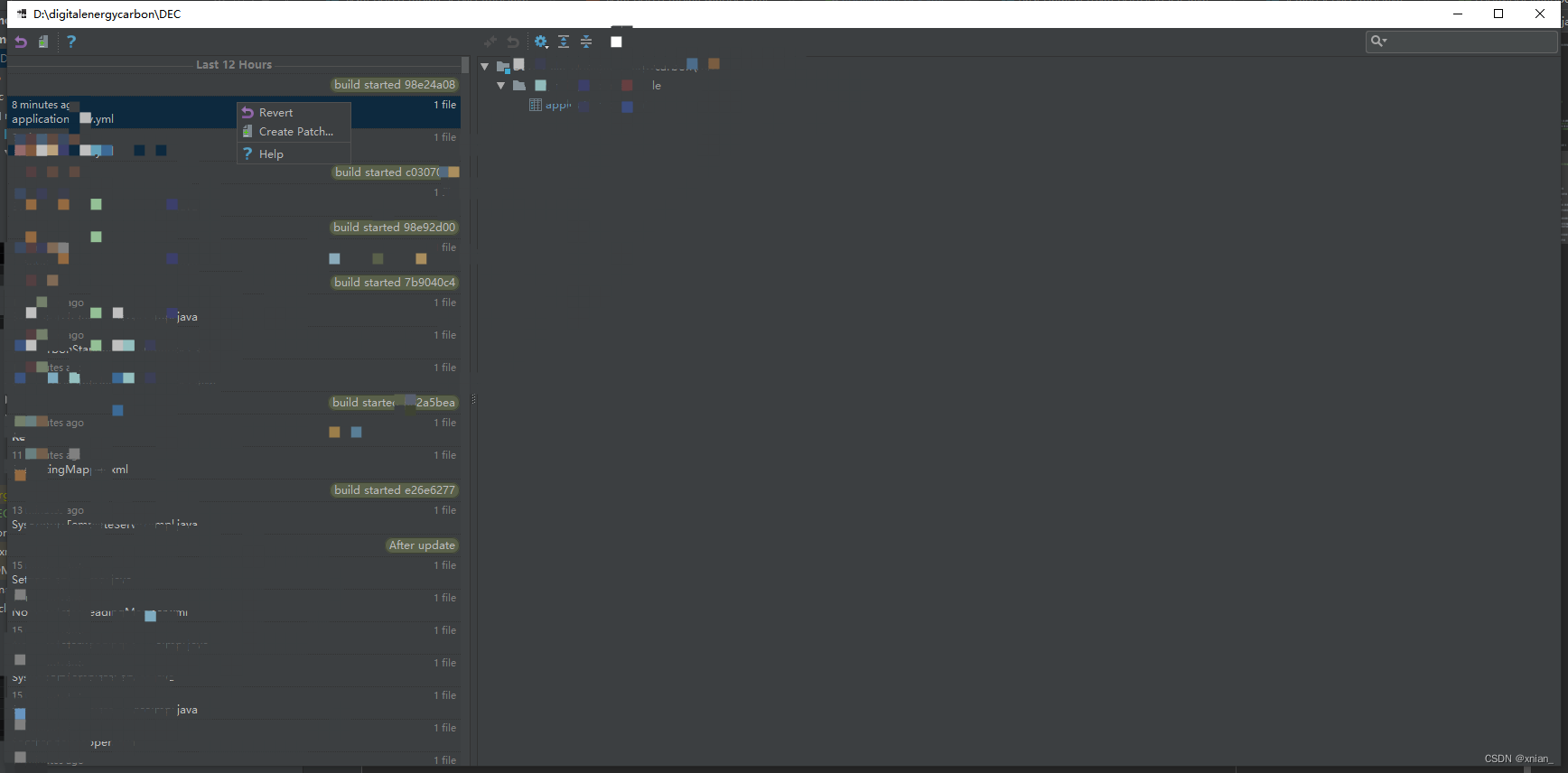
idea提交代码冲突后,代码意外消失解决办法
敲了大半天的代码,解决冲突后,直接消失了当时慌的一批CCCCC 右击项目Local History ----show History 找到最近提交的内容右击选择Revert,代码全回来了...

爬虫批量下载科研论文(SciHub)
系列文章目录 利用 eutils 实现自动下载序列文件 提示:写完文章后,目录可以自动生成,如何生成可参考右边的帮助文档 文章目录 系列文章目录前言一、获取文献信息二、下载文献PDF文件参考 前言 大家好✨,这里是bio🦖。…...

explain查询sql执行计划返回的字段的详细说明
当使用EXPLAIN命令查看SQL语句的执行计划时,会返回一张表格,其中包含了该SQL语句的执行计划。下面是每个字段的详细分析: id:执行计划的唯一标识符。如果查询中有子查询,每个子查询都会有一个唯一的ID。在执行计划中&a…...

讯飞输入法13.0发布,推出行业首款生成式AI输入法
🦉 AI新闻 🚀 讯飞输入法13.0发布,推出行业首款生成式AI输入法 摘要:科大讯飞在2023年全球开发者节上发布了全新讯飞输入法13.0版本,其中最大的亮点是推出了行业首款生成式AI输入法。这次升级将生成式AI能力融入输入…...

35. 搜索插入位置、Leetcode的Python实现
博客主页:🏆看看是李XX还是李歘歘 🏆 🌺每天分享一些包括但不限于计算机基础、算法等相关的知识点🌺 💗点关注不迷路,总有一些📖知识点📖是你想要的💗 ⛽️今…...

使用 DDPO 在 TRL 中微调 Stable Diffusion 模型
引言 扩散模型 (如 DALL-E 2、Stable Diffusion) 是一类文生图模型,在生成图像 (尤其是有照片级真实感的图像) 方面取得了广泛成功。然而,这些模型生成的图像可能并不总是符合人类偏好或人类意图。因此出现了对齐问题,即如何确保模型的输出与…...

cocosCreator 之 crypto-es数据加密
版本: 3.8.0 语言: TypeScript 环境: Mac 简介 项目开发中,针对于一些明文数据,比如本地存储和Http数据请求等,进行加密保护,是有必要的。 关于加密手段主要有: 对称加密 使用相…...

[2025CVPR]DeepVideo-R1:基于难度感知回归GRPO的视频强化微调框架详解
突破视频大语言模型推理瓶颈,在多个视频基准上实现SOTA性能 一、核心问题与创新亮点 1.1 GRPO在视频任务中的两大挑战 安全措施依赖问题 GRPO使用min和clip函数限制策略更新幅度,导致: 梯度抑制:当新旧策略差异过大时梯度消失收敛困难:策略无法充分优化# 传统GRPO的梯…...
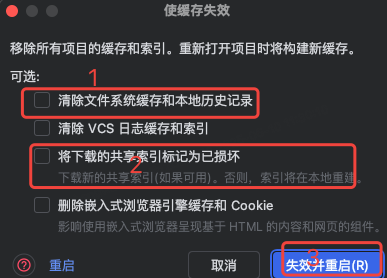
idea大量爆红问题解决
问题描述 在学习和工作中,idea是程序员不可缺少的一个工具,但是突然在有些时候就会出现大量爆红的问题,发现无法跳转,无论是关机重启或者是替换root都无法解决 就是如上所展示的问题,但是程序依然可以启动。 问题解决…...

Qt Widget类解析与代码注释
#include "widget.h" #include "ui_widget.h"Widget::Widget(QWidget *parent): QWidget(parent), ui(new Ui::Widget) {ui->setupUi(this); }Widget::~Widget() {delete ui; }//解释这串代码,写上注释 当然可以!这段代码是 Qt …...
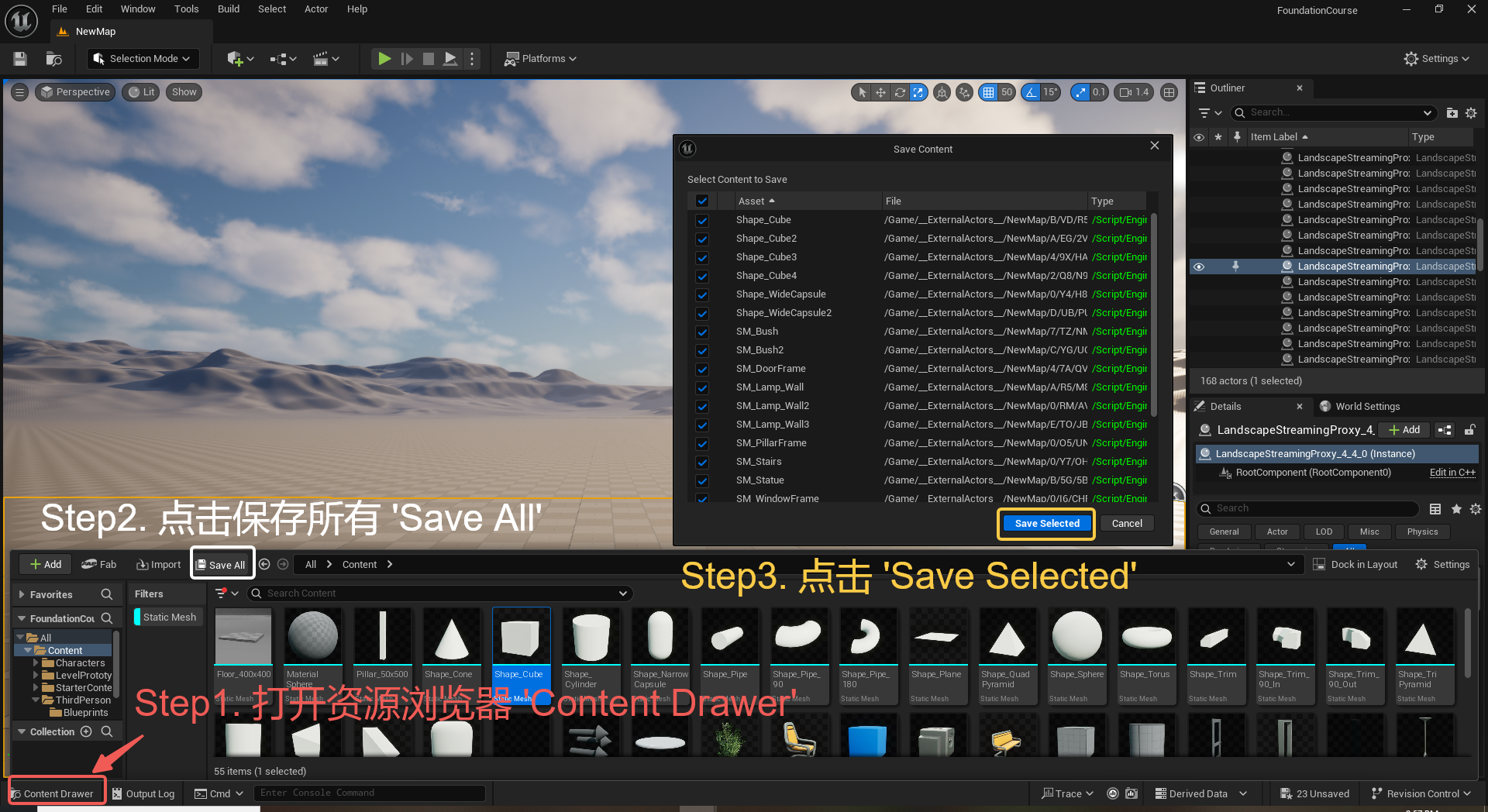
UE5 学习系列(三)创建和移动物体
这篇博客是该系列的第三篇,是在之前两篇博客的基础上展开,主要介绍如何在操作界面中创建和拖动物体,这篇博客跟随的视频链接如下: B 站视频:s03-创建和移动物体 如果你不打算开之前的博客并且对UE5 比较熟的话按照以…...

深入理解JavaScript设计模式之单例模式
目录 什么是单例模式为什么需要单例模式常见应用场景包括 单例模式实现透明单例模式实现不透明单例模式用代理实现单例模式javaScript中的单例模式使用命名空间使用闭包封装私有变量 惰性单例通用的惰性单例 结语 什么是单例模式 单例模式(Singleton Pattern&#…...

Spring Boot面试题精选汇总
🤟致敬读者 🟩感谢阅读🟦笑口常开🟪生日快乐⬛早点睡觉 📘博主相关 🟧博主信息🟨博客首页🟫专栏推荐🟥活动信息 文章目录 Spring Boot面试题精选汇总⚙️ **一、核心概…...

uniapp微信小程序视频实时流+pc端预览方案
方案类型技术实现是否免费优点缺点适用场景延迟范围开发复杂度WebSocket图片帧定时拍照Base64传输✅ 完全免费无需服务器 纯前端实现高延迟高流量 帧率极低个人demo测试 超低频监控500ms-2s⭐⭐RTMP推流TRTC/即构SDK推流❌ 付费方案 (部分有免费额度&#x…...

PL0语法,分析器实现!
简介 PL/0 是一种简单的编程语言,通常用于教学编译原理。它的语法结构清晰,功能包括常量定义、变量声明、过程(子程序)定义以及基本的控制结构(如条件语句和循环语句)。 PL/0 语法规范 PL/0 是一种教学用的小型编程语言,由 Niklaus Wirth 设计,用于展示编译原理的核…...
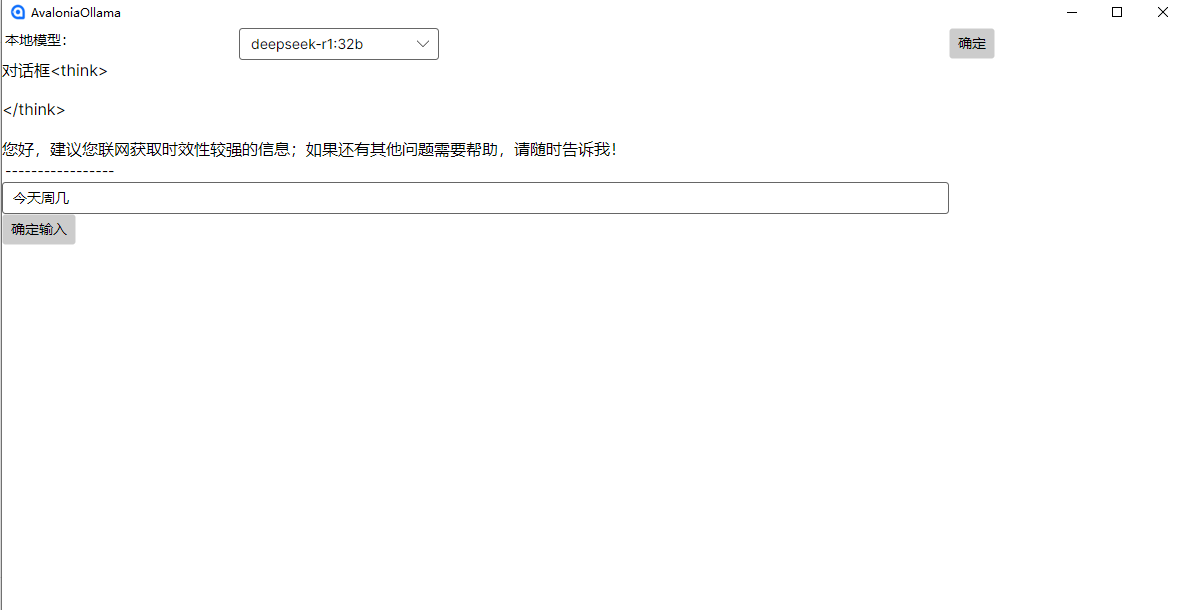
c#开发AI模型对话
AI模型 前面已经介绍了一般AI模型本地部署,直接调用现成的模型数据。这里主要讲述讲接口集成到我们自己的程序中使用方式。 微软提供了ML.NET来开发和使用AI模型,但是目前国内可能使用不多,至少实践例子很少看见。开发训练模型就不介绍了&am…...
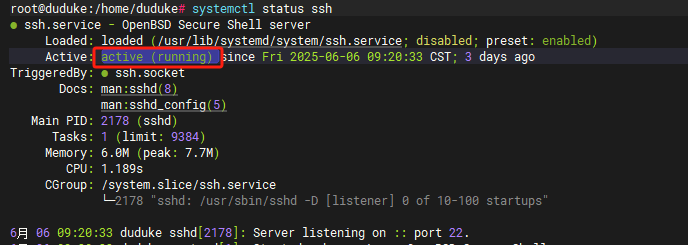
VM虚拟机网络配置(ubuntu24桥接模式):配置静态IP
编辑-虚拟网络编辑器-更改设置 选择桥接模式,然后找到相应的网卡(可以查看自己本机的网络连接) windows连接的网络点击查看属性 编辑虚拟机设置更改网络配置,选择刚才配置的桥接模式 静态ip设置: 我用的ubuntu24桌…...
